ALM includes the entire lifecycle of the application and continues beyond SDLC. Many of these models are shared with the development of software, such as waterfall or agile. Numerous model frameworks can be adapted to fit into the development of software. This high-risk SDLC model throws most of its resources at development and works best for small projects.
- This is where shortcomings are officially determined by a system analyst.
- T’s important that the software overall ends up meeting the quality standards that were previously defined in the SRS document.
- The spiral model combines the iterative model’s small repeated cycles with the waterfall model’s linear sequential flow to prioritize risk analysis.
- Phase 6 of the initial development state of the systems development life cycle puts the software into production and runs as needed.
- Each stage has a separate project plan and takes information from the previous stage to avoid similar issues (if encountered).
As a leading provider of application security testing solutions, Veracode makes it easy for developers and security teams to integrate security throughout the SDLC. This makes it possible for developers to find and fix flaws at the most cost-efficient point in the development process and deliver more secure software, faster. The typical stages of the system development life cycle are planning and feasibility, requirements analysis, design and prototyping, software development, system testing, implementation, and maintenance. Finally, the planning process clearly defines the outline of system development. The project manager will set deadlines and time frames for each phase of the software development life cycle, ensuring the product is presented to the market in time.
Software Deployment
The team will build functionality for the product or service, which includes creating a user interface and building the database so users can store information in your system. The software development life cycle (SDLC) is the process of planning, writing, modifying, and maintaining software. Developers use the methodology as they design and write modern software for computers, cloud deployment, mobile phones, video games, and more. Adhering to the SDLC methodology helps to optimize the final outcome. In this stage, the problem or pain the software targets is clearly defined. First, developers and other team members outline objectives for the system and draw a rough plan of how the system will work.

SADT can be used as a functional analysis tool of a given process, using successive levels of detail. Requirements Gathering – provides alternative means to illustrate, explain, and specify exactly what must be delivered to meet business goals. When teams have clarity into the work getting done, there’s no telling how much more they can accomplish in the same amount of time. The Smartsheet platform makes it easy to plan, capture, manage, and report on work from anywhere, helping your team be more effective and get more done. Report on key metrics and get real-time visibility into work as it happens with roll-up reports, dashboards, and automated workflows built to keep your team connected and informed.
Systems Development Life Cycle (SDLC) Model
We will delve into the significance of each stage, emphasizing the critical role played by System Design in the overall process. This step involves decomposing the system into pieces, analyzing project goals, breaking down what needs to be created, and engaging users to define requirements. During this stage of the system lifecycle, subsystems that perform the desired system functions are designed and specified in compliance with the system specification.

All stakeholders then review this plan and offer feedback and suggestions. It’s crucial to have a plan for collecting and incorporating stakeholder input into this document. Failure at this stage will almost certainly result in cost overruns at best and the total collapse of the project at worst. Each stage in the SDLC has its own set of activities that need to be performed by the team members involved in the development project. While the process timeline will vary from project to project, the SDLC generally follows the seven stages outlined below.
Mobile App Development Trends of 2023
Languages like C# and Java are still in demand by employers, but many new languages are emerging, too. Before choosing a language, you need to know what you want to code, but simple front-end development languages like JavaScript, HTML, and CSS are good places to start. This process is repeated again and again, with each iteration yielding a new version of, for instance, the software. An existing system is replaced by a new system that consists of replaced components or modules to ensure that it meets new requirements. SAD is mostly used to find a balance between requirements at a higher level. There was a growing need for building large company systems, but the consumers and users in those days were far less demanding.
In fact, in many cases, SDLC is considered a phased project model that defines the organizational, personnel, policy, and budgeting constraints of a large scale systems project. SDLC methodologies fit within a flexibility spectrum ranging from agile to iterative to sequential. Phase 3 of the systems development life cycle describes the desired features and operations of the system. The objective of the systems design phase is to transform all requirements into detailed specifications covering all aspects of the system.
Agile Development Methodologies
Then, they may make use of predictive analysis and AI simulation tools at this stage to test the early-stage validity of an idea. This analysis helps project managers build a picture of the long-term resources required to develop a solution, potential market uptake, and which obstacles might https://www.globalcloudteam.com/ arise. The systems development life cycle originally consisted of five stages instead of seven. These included planning, creating, developing, testing, and deploying. This includes all the specifications for software, hardware, and network requirements for the system they plan to build.

Modern SDLC processes have become increasingly complex and interdisciplinary. SDLC models can therefore help projects to iterate and improve upon themselves over and over until essentially perfect. SDLC models implement checks and balances to ensure that all software is tested before being installed in greater source code. The agile methodology prioritizes fast and ongoing release cycles, utilizing small but incremental changes between releases. This results in more iterations and many more tests compared to other models.
Agile
On the other hand, system development is a broader superset involving the setup and management of the software, hardware, people, and processes that can make up a system. It can include tasks like organizational training and change management policies that don’t fall under the software development umbrella. Phase 7 of the systems development life cycle assesses and ensures that the system does not become obsolete. Before the preliminary analysis is complete, the developer performs feasibility studies to determine whether to fix the existing system or create a new system to replace the old.
Furthermore, developers will often create a software requirement specification or SRS document. Before we even begin with the planning stage, the best tip we can give you is to take time and acquire proper understanding of app development life cycle. In this guide, we’ll break down everything you need to know about the system development life describe system development life cycle cycle, including all of its stages. We’ll also go over the roles of system analysts and the benefits your project might see by adopting SDLC. During this step, current priorities that would be affected and how they should be handled are considered. A feasibility study determines whether creating a new or improved system is appropriate.
What is the software development life cycle (SDLC)?
A system is any information technology component – hardware, software, or a combination of the two. Each system goes through a development life cycle from initial planning through to disposition. The planning phase typically includes tasks like cost-benefit analysis, scheduling, resource estimation, and allocation. The development team collects requirements from several stakeholders such as customers, internal and external experts, and managers to create a software requirement specification document. Various SDLC methodologies have been developed to guide the processes involved, including the original SDLC method, the Waterfall model. Other SDLC models include rapid application development (RAD), joint application development (JAD), the fountain model, the spiral model, build and fix, and synchronize-and-stabilize.

